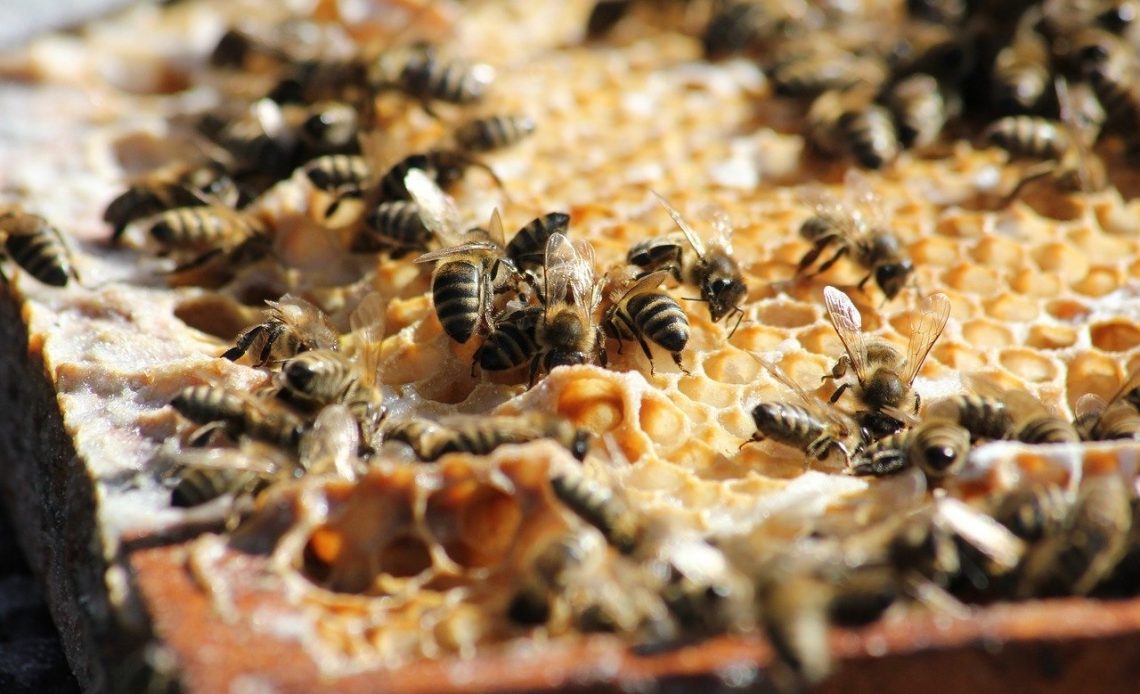

We’re here to help! Wild Yards is a completely free website that is 100% dedicated to helping you create a wildlife-friendly, sustainable yard. Read more
WildYards is reader-supported. When you buy a product through a link on our site, we may earn a comission. Every product is independently selected by our (obsessive) editors and our reviews are unbiased and objective. Read more about our mission or our privacy policy.
When it comes to the honey-making business, bees can often find themselves in a sticky situation or two. Beekeepers have, over the years, found themselves trying to make hive and colony setups as safe as possible for their insects. However, there are all kinds of hazards to look out for, like bees drinking fermented honey, but there are other seemingly benign situations that can cause concern – for example, can bees drown in honey?
Anecdotal sources suggest that yes, it is possible for bees to get stuck and potentially drown in honey. This is because the weight of honey is much greater than water, and given that it is an extremely sticky substance, there is always a chance for bees to get weighed under.
Let’s take a closer look at how bees breathe, and how you can avoid them getting stuck or even drowning in the future.
Can bees breathe underwater?
No. They are much like us, in that they have a traditional breathing apparatus that has evolved so they can breathe air in and out. Their breathing systems are perhaps a little more complex than our own, however, meaning that they may even be able to hold their breath longer underwater than people can.
Bees are able to breathe through a system known as spiracles. These are respiratory ports that allow air in and out of tracheae or windpipes. The trachea of a bee can be very complex – it’s normally a spiral shape, and they can split into tubes that divide further and further into the bee’s inner tissue.
This means that yes – believe it or not – bees don’t actually have lungs! They don’t have gills either, however, which of course stands to reason as to why they cannot breathe underwater, or when submerged in honey.
Bees instead have sacs at points along their tracheae which inflate and deflate much like balloons. These contract and expand as a result of abdominal movement. Therefore, while it stands to reason that bees cannot breathe underwater – much like us – they actually have very different breathing apparatus altogether.
How can I stop a bee getting stuck in honey?
The most obvious way to prevent the chance of a bee getting stuck in, or even drowning in honey, is to be very conservative with any that you give to them. If you are handling the honeycomb from their hive, it’s also your duty as a beekeeper to be very careful and efficient with frame handling.
Some beekeepers suggest that improper handling of beehives or honeycomb frames can actually lead to honey spilling free, which can then spill down and potentially cover bees.
As bees are very likely to want to consume the honey and to drink their way out, they may not be able to break free from the sticky mess. Honey can be up to a third heavier than water, which means that while you may assume it is easy enough for the insects to work their way out of, this may not always be the case.
Crucially, it’s important to make sure you are handling beehive frames with care, if you are a keeper. If you are simply introducing honey and other treats into your garden to attract bees, then you will do well to avoid using too much honey – if at all. Go sparingly, and there will be very little risk of your colony getting stuck and unable to move.
A good alternative may be to consider other ways to attract bees into your garden. Maybe consider putting out sugar water to attract bees, or look into crafting your flowerbed so that it’s full of natural bee magnetism without any risk of drowning or entrapment.
Do you have any experience of giving bees honey? If you have any tips to share with me, ’d love to hear them – and don’t forget to check out our further guides on how to attract and care for bees in your backyard, too.
